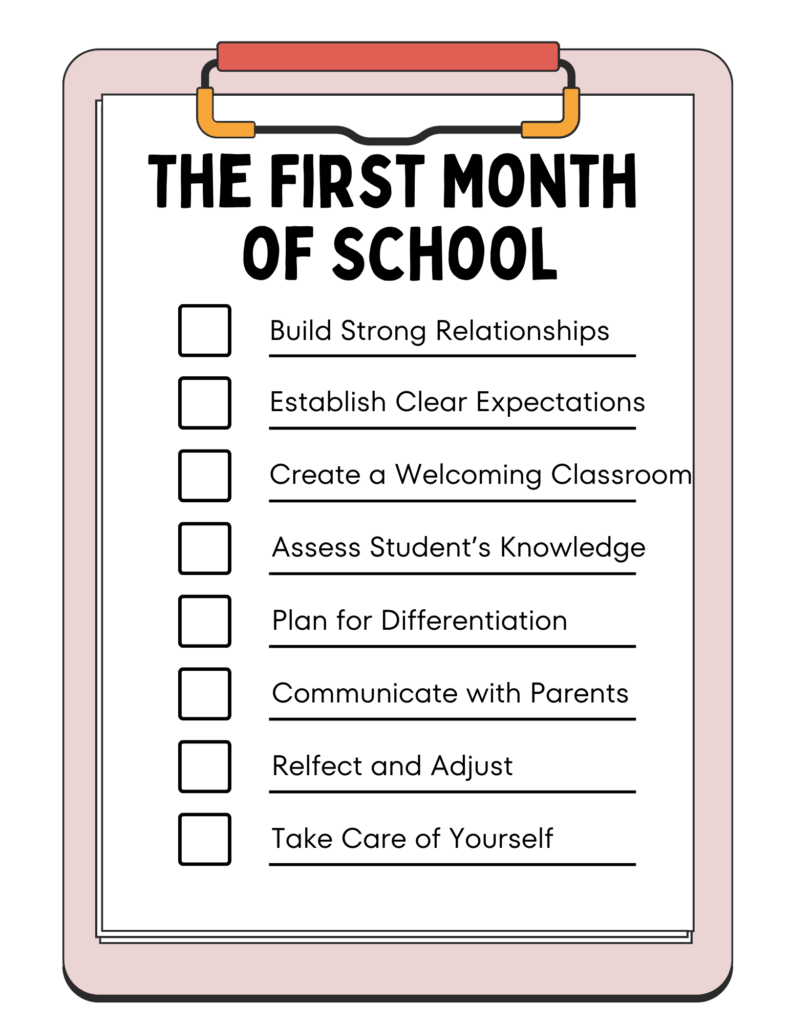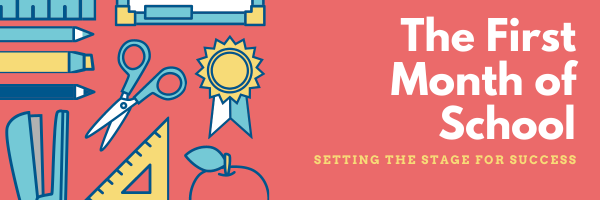The first month of school is a critical time for both teachers and students. It’s a time for establishing routines, building relationships, and setting the tone for the rest of the year. Whether you’re a seasoned educator or a new teacher, the first month lays the foundation for a successful school year. Here are some tips to keep in mind during these first few weeks.
Build Strong Relationships
The first month is all about getting to know your students and letting them get to know you. Building strong relationships is key to creating a positive classroom environment where students feel valued and respected. Take time to learn about your students’ interests, strengths, and challenges. Use icebreakers like “Two Truths and a Lie” or “Human Bingo” to break the ice.
For older students, try a “Speed Friending” activity to help them learn more about each other. To do this, have students stand in two lines facing each other, or sit across from each other. Each student should face another student. Ask questions that can help students learn more about each other. For example, you could ask students, If they could go anywhere in the world, where would they go? After asking a question, allow each pair of students to take turns answering.
Establish Clear Routines and Expectations

Consistency is crucial in the classroom, especially in the early weeks of school. Establish clear routines and expectations so that students understand what is required of them. In fact, you can involve your students in the process by asking them to brainstorm ideas for their own classroom expectations. Be sure to create visual aids for classroom expectations, like posters that you can hang around your room. Refer to them often and spend time teaching and reinforcing them daily.
Create a Welcoming Classroom Environment
Your classroom should be a welcoming space where students feel comfortable and valued. Setup your classroom to be inviting. You could decorate your classroom with student work. Create a cozy reading space with pillows and a small rug or create a calming corner where students can relax when feeling overwhelmed. Display a “Welcome to Our Class” banner and add personal touches like photos of your students engaged in learning activities.
Assess Student’s Prior Knowledge
The beginning of the year is a great time to assess your students’ prior knowledge and skills. Use formative assessments or informal discussions to gauge where each student is academically. This information will help you adapt your instruction to meet your student’s needs. By understanding what students already know and can do, you can adjust your teaching to build on their existing knowledge and skills. For example, for reading, use a “Book Tasting” activity where students sample different genres and levels of books. In math, try a “Problem of the Day” challenge to assess various skills. In addition, using writing prompts that reveal students’ interests and abilities.
Plan for Differentiation
After you have accessed your student’s prior knowledge, take that information and start planning to differentiate your instruction. Your students will enter your classroom with a wide range of abilities. Identify students who may need additional support or those who may require more challenging work. According to “A Practical Guide to Planning for Intentional Differentiation,” differentiation is a three-pronged approach. It involves differentiating content, process, and product. This will help ensure that all students can succeed at their own pace.
Communicate with Parents and Guardians
Open your lines of communication with parents and guardians early in the school year. Send a welcome letter or email outlining your expectations and classroom policies. Mention how they can support their child’s learning at home. There are a variety of digital tools, such as Remind, Google Forms, and more that you can use to help facilitate this process. Prior to using these tools, check with your district’s communications and/or technology department to see if they have a subscription to a paid tool that they would prefer you to use. The district-provided tool may have additional features that you can use. Remember that regular communication builds trust and ensures that everyone is on the same page regarding student progress and any challenges that may arise.
Reflect and Adjust
As you progress through the first month, take time to reflect on what’s working well and what might need adjustment. Through self-reflection, we can have those “aha moments” leading us to make improvements. Be flexible and willing to change based on the needs of your students. Continuous reflection and adjustment are key to a successful and dynamic classroom.
Take Care of Yourself
The first month can be intense, so it’s important to take care of yourself, as well. Set realistic goals, take breaks when needed, and reach out to your colleagues for support. A well-rested and energized teacher is better equipped to support their students.
By focusing on these strategies during the first month of school, you’ll lay a strong foundation for a successful and fulfilling year ahead. Remember, the time you invest in building relationships, establishing routines, and understanding your students’ needs will pay off throughout the school year.

